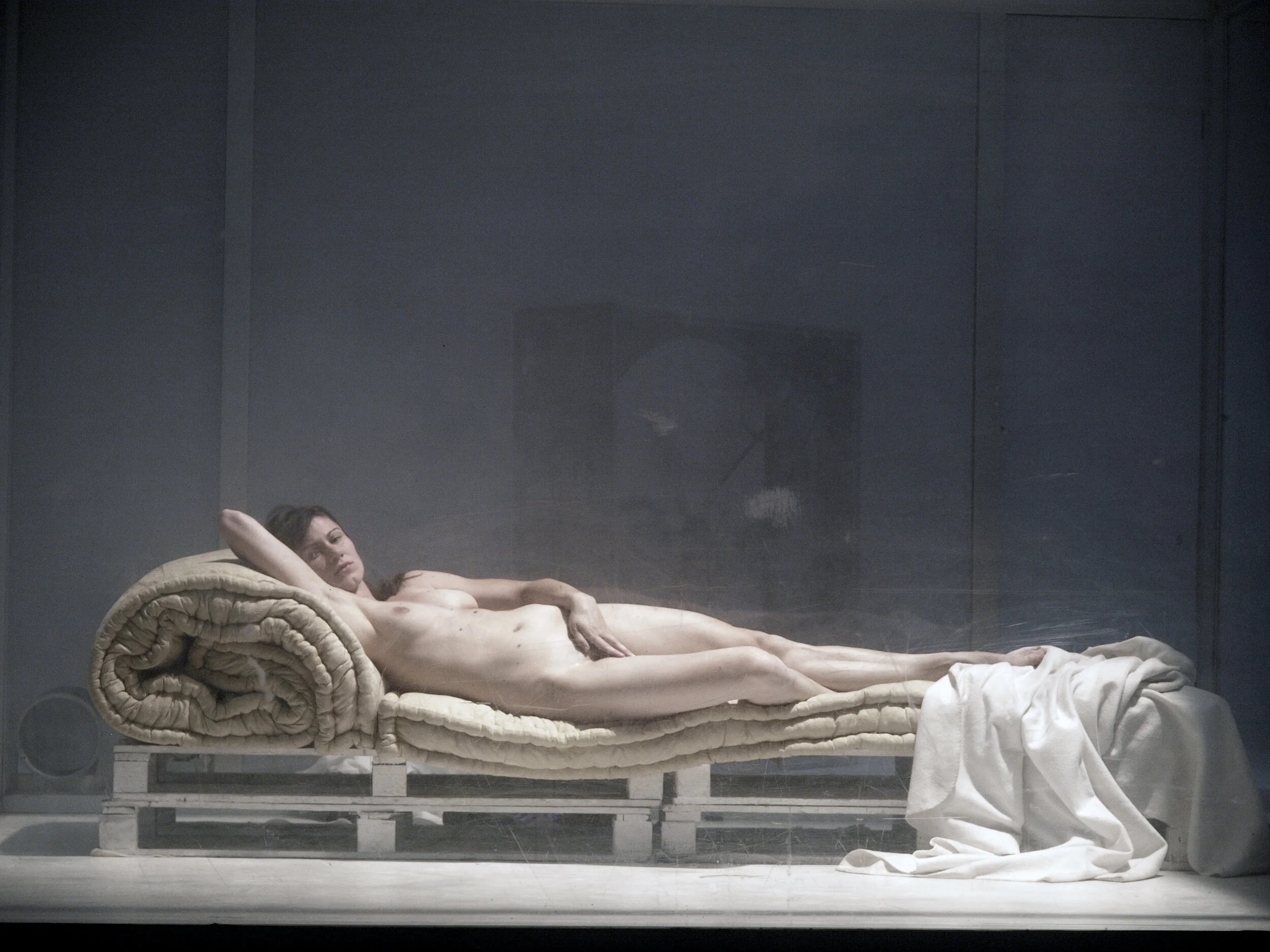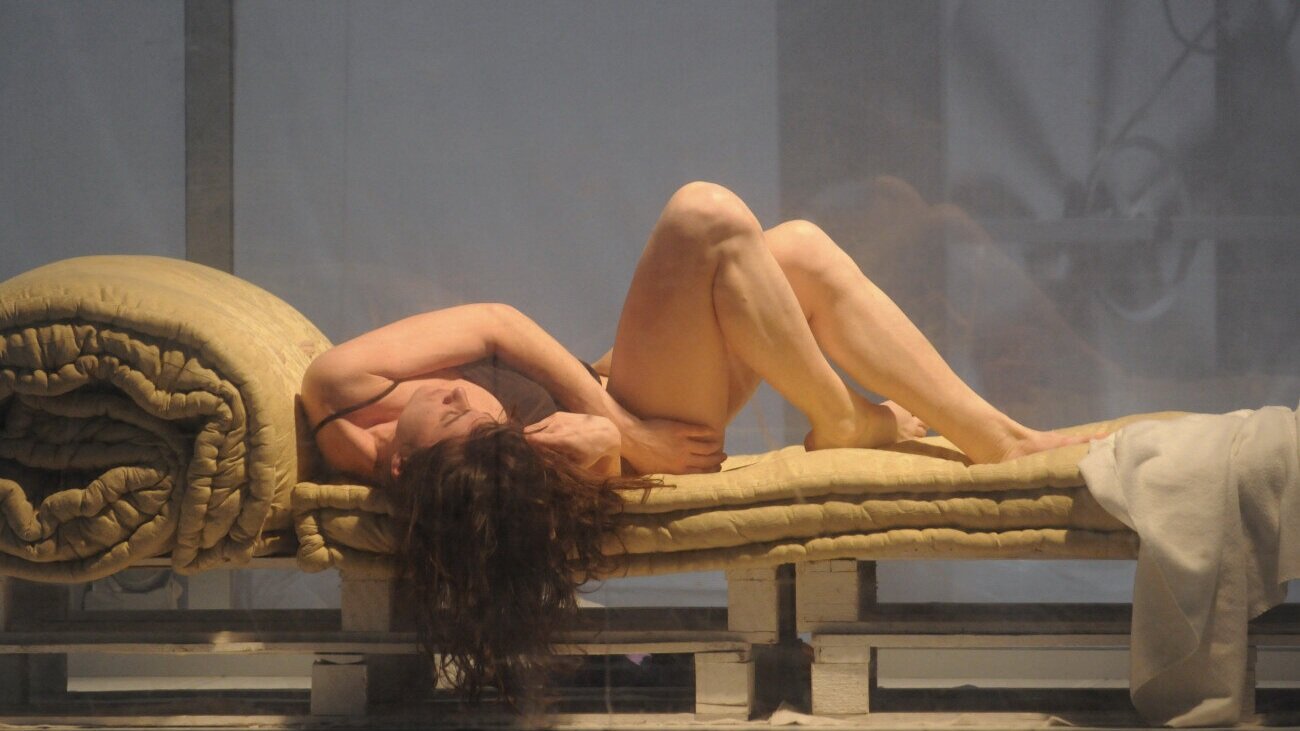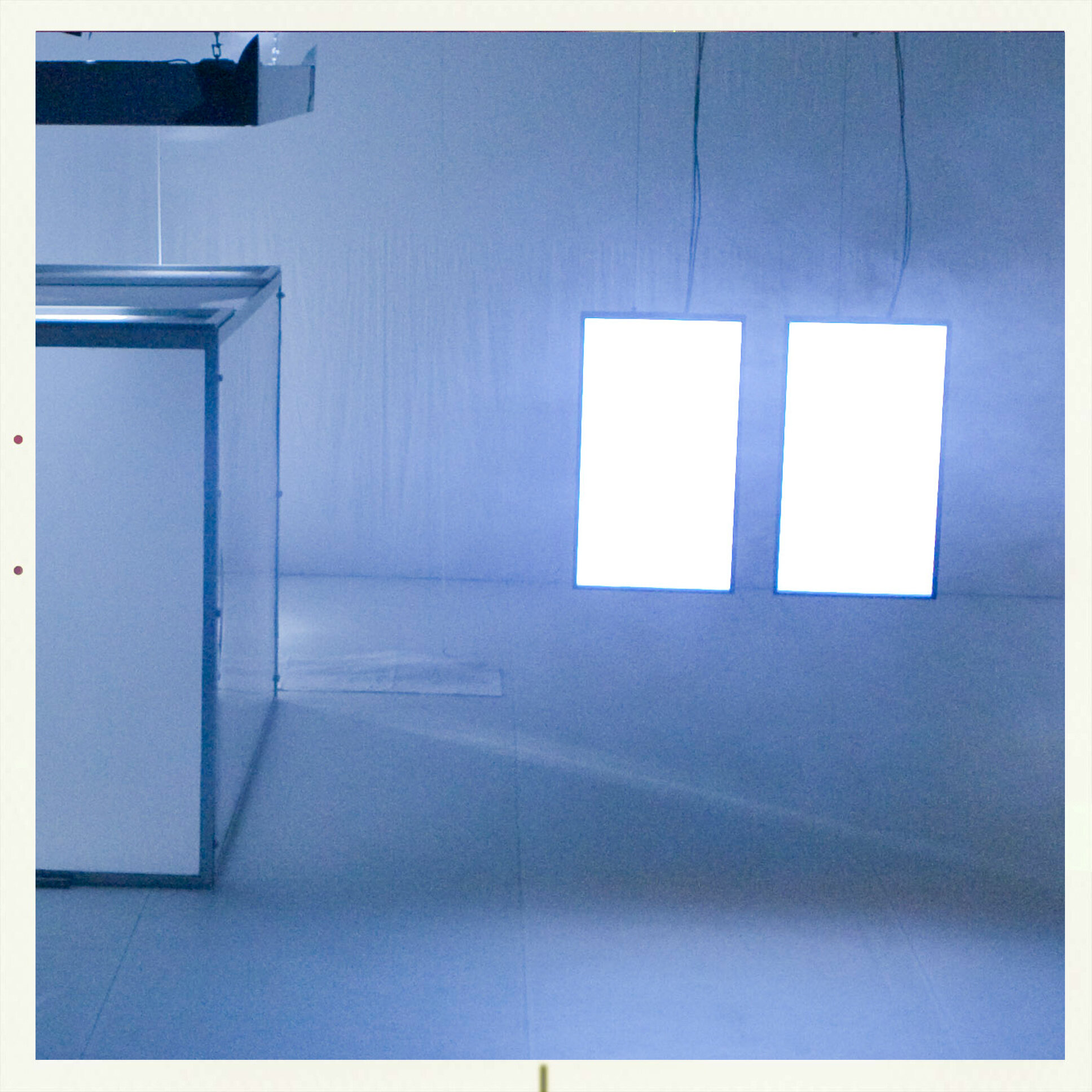


Due schermi a cristalli liquidi sospesi come due moderne pale d’altare ritraggono paesaggi avvolti dalla nebbia e sferzati dai venti di una tempesta che incombe all’orizzonte. Un senso di tragedia imminente è nell’aria. Tempesta unisce passato e presente, esplorando il mondo rivelato negli enigmatici dipinti di Giorgione. Calme e solo apparentemente pacifiche nella composizione queste opere sollevano dubbi nella mente dell’osservatore, suggerendo una più complessa rete di significati. Giorgione morì per contagio a soli 33 anni nel 1510.
Showing misty landscapes and the winds of a gathering storm, two suspended video screens appear like modern day altar pieces. A sense of impending tragedy hangs in the air. Tempesta links past and present, exploring the world revealed in enigmatic paintings by Renaissance artist, Giorgione. Outwardly calm and conventional each one raise doubts in the viewers’ mind, hinting at a more complex web of meanings. Giorgione died of a plague at only 33 in 1510.

“And I am become death the destroyer of worlds.”
tempèstas in origine significò momento del giorno, solo in seguito divenne condizione, stato atmosferico e infine, in modo speciale, un tempo burrascoso e rovinoso. Ne La Tempesta, nel Fregio e in altri dipinti di Giorgione l’attimo fulmineo viene congelato nella rappresentazione naturale del lampo, dell’atmosfera e della luce di un Veneto che non ritornerà, catturato dallo sguardo che fissa la stagione e le fasi del ciclo di vita vegetale, sconvolto dal vento, saturato dalle buie nubi incombenti. La natura offre un codice – la cui chiave è da ricercare nella tradizione sapienziale vetero-testamentale e nei testi apocalittici – per annunciare la fine dei giorni.
tempèstas originally meant moment of the day, only after it became a condition, an atmospheric state and finally, in a very special way, a stormy and violent weather. In La Tempesta, in Fregio and in other paintings by Giorgione the lighting moment is immortalized in the natural representation of the lighting, of the atmosphere and the light of a certain Veneto that won’t come back any more, captured by the look that stares at the season and at the phases of the nature life cycle, upset by the wind, overfilled with impending clouds. Nature offers a code – whose key has to be researched in the wise Old Testament tradition and in the apocalyptic texts – to announce the end of the days.

L’Apocalissi (nel senso e di battaglia finale, e di rivelazione) che interessa è tanto quella universale quanto quella di ciascun individuo che sente e soffre il tempo breve della giovinezza, l’irreparabile finitezza. La crescita, la sfida contro il chaos, la caducità. Alle previsioni astrologiche dei cieli del primo lustro del XVI secolo si sostituiscono i segni dell’incombente contemporaneo, ma la condizione umana di cosciente essere effimero rimane il primo motore dell’angoscia e dei suoi risvolti più sublimi: l’arte e la poesia. Nel giorno e nel suo trascorrere, per ciascun uomo la propria apocalisse personale. Come in Giorgione l’Anticristo è uno di noi, così è in noi stessi che cresce l’antagonista della nostra personale battaglia.
The Apocalypses (in the meaning of final battle, and revelation) that interests is as much the universal as the one of every human being who feels and suffers for the short time of youth and the irreparable finiteness. The growth, the challenge against the chaos, the transience. The astrologic forecasts of the first lustrum of the 16th century leave the place to the signs of the impending contemporary, but the self consciousness on the transitory condition of the human being remains the first cause of anguish and of its most sublime consequences: art and poetry. In the day and in its passing by, every man has his own private and personal apocalypses. As in Giorgione the Antichrist is one among us, it’s inside ourselves that grows the antagonist of our personal battle.
“Fortior qui cupiditatem vincit quam qui hostem subiecit”



ANAGOOR
TEMPESTA
with
Anna Bragagnolo, Pierantonio Bragagnolo
movements
Simone Derai, Anna Bragagnolo
dance
Giorgia Ohanesian Nardin
sound design
Marco Menegoni
set and costume design
Simone Derai
video
Simone Derai, Marco Menegoni, Moreno Callegari
video editing and direction
Simone Derai, Marco Menegoni
light design
Simone Derai
assistance
Marco Menegoni, Moreno Callegari
writing
Simone Derai, Eloisa Bressan
historical and iconographic advice
professor Silvio D’Amicone
direction
Simone Derai
production
Anagoor 2009
coproduction
Centrale Fies, Operaestate Festival Veneto
special mention Premio Scenario 2009
photographic credits / promotional pictures
Simone Derai
photographic credits / live pictures
Alessandro Sala, Roberto Rognoni, Michele Tomaiuoli, Adriano Boscalto, Serena Pea, Marco Caselli Nirmal
photographic credits / La Tempesta, Giorgione
courtesy of Gallerie dell'Accademia, Venezia









